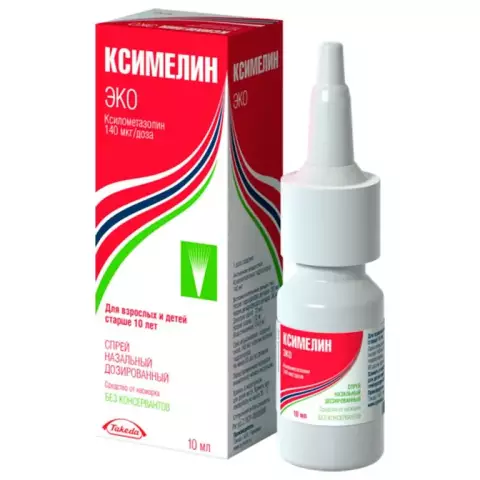- Author Rachel Wainwright [email protected].
- Public 2023-12-15 07:39.
- Last modified 2025-11-02 20:14.
Cyclophosphamide
Instructions for use:
- 1. Composition and form of release
- 2. Pharmacological action
- 3. Indications for use
- 4. Contraindications
- 5. Method of administration and dosage regimen
- 6. Side effects
- 7. Special instructions
- 8. Storage conditions

Cyclophosphamide is an alkylating compound. Antineoplastic drug.
Composition and release form of Cyclophosphamide
The drug is produced in the form of a white crystalline powder for preparation of a solution for intramuscular and intravenous administration. Each bottle contains an active ingredient - 200 mg of cyclophosphamide.
pharmachologic effect
According to the instructions, Cyclophosphamide is an alkylating cytostatic drug, in its chemical composition similar to the nitrogen analogues of mustard gas.
The mechanism of action of the drug is the formation of cross-links between RNA and DNA strands, as well as inhibition of protein synthesis.
Indications for the use of Cyclophosphamide
According to the instructions, Cyclophosphamide is indicated in the following cases:
- chronic lymphocytic leukemia or acute lymphoblastic leukemia;
- non-Hodgkin lymphomas;
- lymphogranulomatosis;
- breast, ovarian cancer;
- multiple myeloma;
- fungal mycosis;
- retinoblastoma;
- neuroblastoma.
Cyclophosphamide is used in combination with other anticancer drugs to treat:
- germ cell tumors;
- cancer of the lung, bladder, cervix, prostate;
- sarcomas of soft tissues, Ewing's sarcomas;
- reticulosarcomas;
- Wilms tumor.
In addition, Cyclophosphamide is considered effective as an immunosuppressive agent for progressive autoimmune diseases (psoriatic arthritis, rheumatoid arthritis, autoimmune hemolytic anemia, collagenosis, nephrotic syndrome), as well as for suppressing the graft rejection reaction.
Contraindications
The instructions for Cyclophosphamide indicate the following contraindications:
- the period of pregnancy and breastfeeding;
- severe bone marrow dysfunction;
- hypersensitivity;
- delay in urination;
- active infections;
- cystitis.
According to reviews, Cyclophosphamide should be prescribed with caution when:
- nephrourolithiasis;
- severe liver, heart and kidney diseases;
- a history of gout;
- infiltration of bone marrow with tumor cells;
- adrenalectomy;
- depression of bone marrow function.
Dosing and Administration of Cyclophosphamide

According to the instructions, Cyclophosphamide is administered intramuscularly or intravenously. Cyclophosphamide is an integral component of many cancer treatment regimens. The dosage and route of administration depends on the specific indications and the patient's tolerance.
Average dosage of Cyclophosphamide for children and adults:
- from 50 to 100 mg per m2 every day for two to three weeks;
- 100 to 200 mg per m2 twice or thrice a week for three or four weeks;
- 600 to 750 mg per m2 once every two weeks;
- from 1500 to 2000 mg per m2 once a month up to a total dose of 6-14 g.
In the case of a combination of Cyclophosphamide with other anticancer drugs, it may be necessary to reduce the dosage of not only cyclophosphamide, but also other drugs.
Side effects of Cyclophosphamide
According to reviews, Cyclophosphamide causes the following side effects:
- Digestive system: anorexia, vomiting, nausea, discomfort and pain in the abdominal region, stomatitis, constipation or diarrhea. There were separate reviews about Cyclophosphamide, indicating the occurrence of jaundice, hemorrhagic colitis.
- Hematopoietic system: neutropenia, anemia, thrombocytopenia, leukopenia. On days 7-14 of treatment, there may be a slight decrease in the number of platelets and leukocytes.
- Skin: alopecia. Hair grows back after taking the drug. In addition, during treatment, a rash may appear on the skin, skin pigmentation and nail changes are observed.
- Cardiovascular system: with the introduction of high dosages of Cyclophosphamide over a long period of time, cardiotoxicity may occur. In addition, difficult, sometimes fatal, cases of heart failure due to hemorrhagic myocarditis have been observed.
- Urinary system: necrosis of the renal tubules (up to the death of the patient), hemorrhagic cystitis or urethritis, fibrosis of the bladder. In the urine, epithelial cells of the bladder can be observed. According to rare reviews, Cyclophosphamide in high dosages can lead to nephropathy, hyperuricemia and impaired renal function.
- Respiratory system: interstitial pulmonary fibrosis.
- Reproductive system: violation of spermatogenesis and oogenesis, sterility (in some cases, irreversible). Many women develop amenorrhea. After stopping treatment, regular periods are usually restored. Taking the drug by men can lead to azoospermia or oligospermia, testicular atrophy of varying degrees.
- Allergies: urticaria, skin rash and itching, anaphylactic reactions.
- Other side effects: flushing of the skin of the face, flushing of the face, the development of secondary malignant tumors, excessive sweating, headache.
special instructions
During the period of application of Cyclophosphamide, it is necessary to regularly monitor the level of platelets and neutrophils in the blood and take a urine test for the number of erythrocytes.
Discontinue treatment with Cyclophosphamide according to the instructions is necessary in the following cases:
- when signs of cystitis with macro- or microhematuria appear;
- with a decrease in the level of platelets to 100,000 / μl or more;
- with a decrease in the level of leukocytes to 2500 / μl or more;
- in the event of severe infections.
During the use of the drug, it is prohibited to consume alcoholic beverages. For the entire period of treatment, it is necessary to use reliable methods of contraception.
Storage conditions
Cyclophosphamide is stored at a temperature not exceeding 10 degrees Celsius. The shelf life is 36 months.
Information about the drug is generalized, provided for informational purposes only and does not replace the official instructions. Self-medication is hazardous to health!






